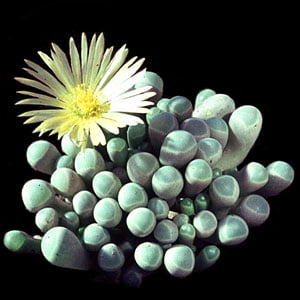Fenestraria Plants for Sale – Unusual and Rare Living Stones
Fenestraria is a succulent genus often referred to as “Baby Toes” because its leaves resemble small toes protruding from the ground. Native to the southern regions of Africa, particularly Namibia and South Africa. Typically they are low-growing plants that form clumps. The plants produce delicate, daisy-like flowers that are usually yellow or white. Species belonging to the genus Fenestraria are Fenestraria rhopalophylla and Fenestraria rhopalophylla subsp. aurantiaca (Fenestraria aurantiaca).
Fenestraria Care and Propagation
Prefer full to partial sun exposure but can tolerate some shade. Require well-drained soil. A mixture of potting soil and sand or perlite is often recommended. A south-facing windowsill or greenhouse with filtered light is a good location. Like other succulents, fenestraria are drought resistant but appreciate occasional watering. Water when the soil is completely dry. Watering should be significantly reduced in winter to mimic the natural dry season of their habitat.
Repotting of Fenestraria plants can be done every 2-3 years or when there is evidence of root formation in the pot. Early spring is an ideal time for repotting. Use a pot with good drainage and soil specially made for succulents. We have composed a special Lithops & Mesembs Soil.Avoid watering for the first week after repotting to minimize the risk of root rot.
Fenestraria can be propagated by division or from seeds. When dividing, carefully separate clumps during transplanting and plant in separate pots. Seeds can be sown in well-drained soil and lightly covered with soil or sand. Maintain a warm temperature of around 20-25°C for seed germination. A transparent lid or cling film can help retain moisture. Seeds usually take 2-4 weeks to germinate. Once the seedlings are large enough, they can be transplanted into individual pots.
Additional Tips: Fenestraria are susceptible to common succulent pests such as mealybugs and aphids. Regular checks and appropriate treatments are advisable. Overwatering is the most common cause of problems and leads to root rot. Ensure good drainage and monitor water levels carefully.
Each Fenestraria plant is carefully wrapped in paper and comes with a label and general growth instructions. For more information and help please check our FAQ & Help page.

 Deutsch
Deutsch Nederlands
Nederlands Français
Français

